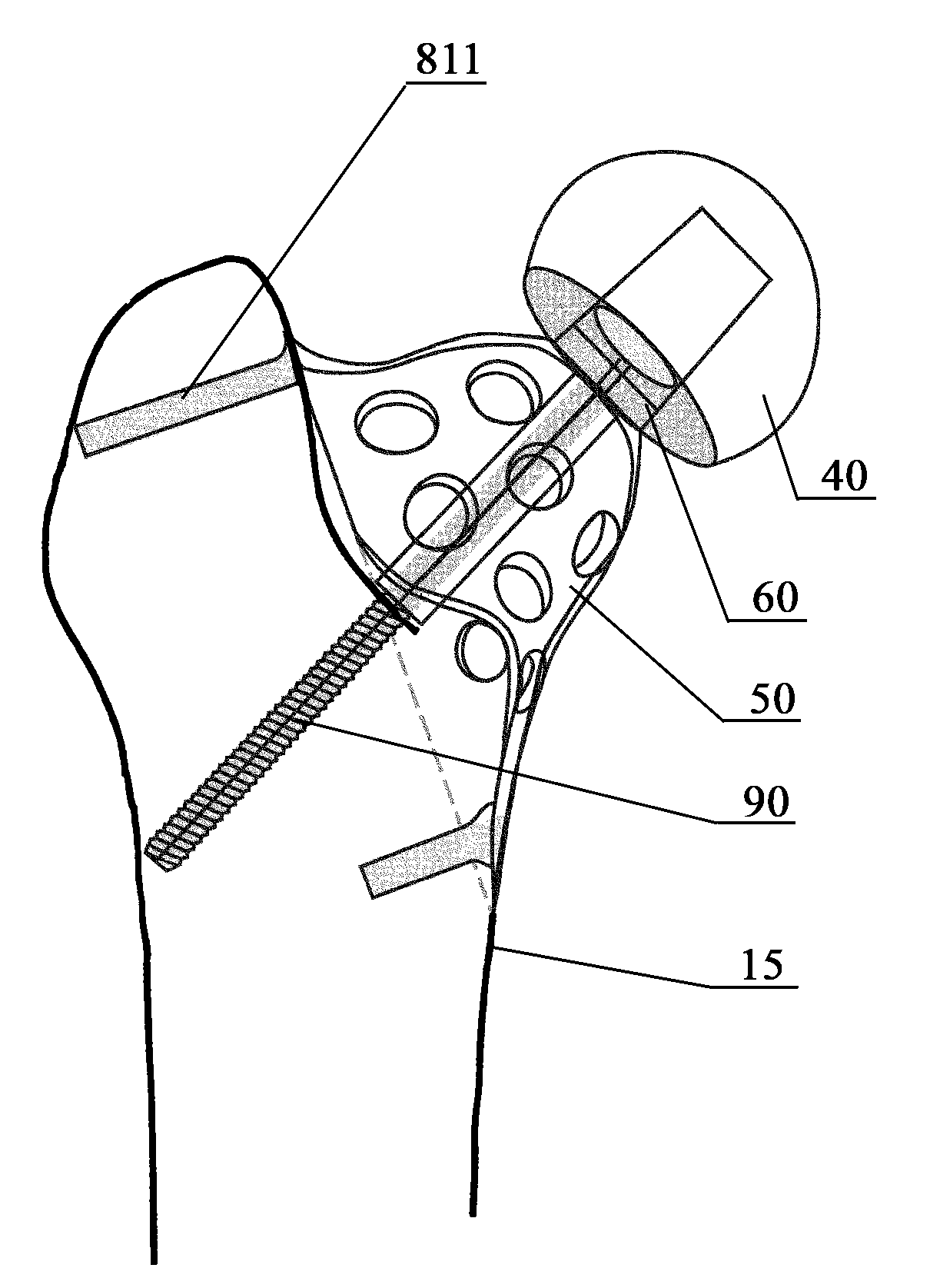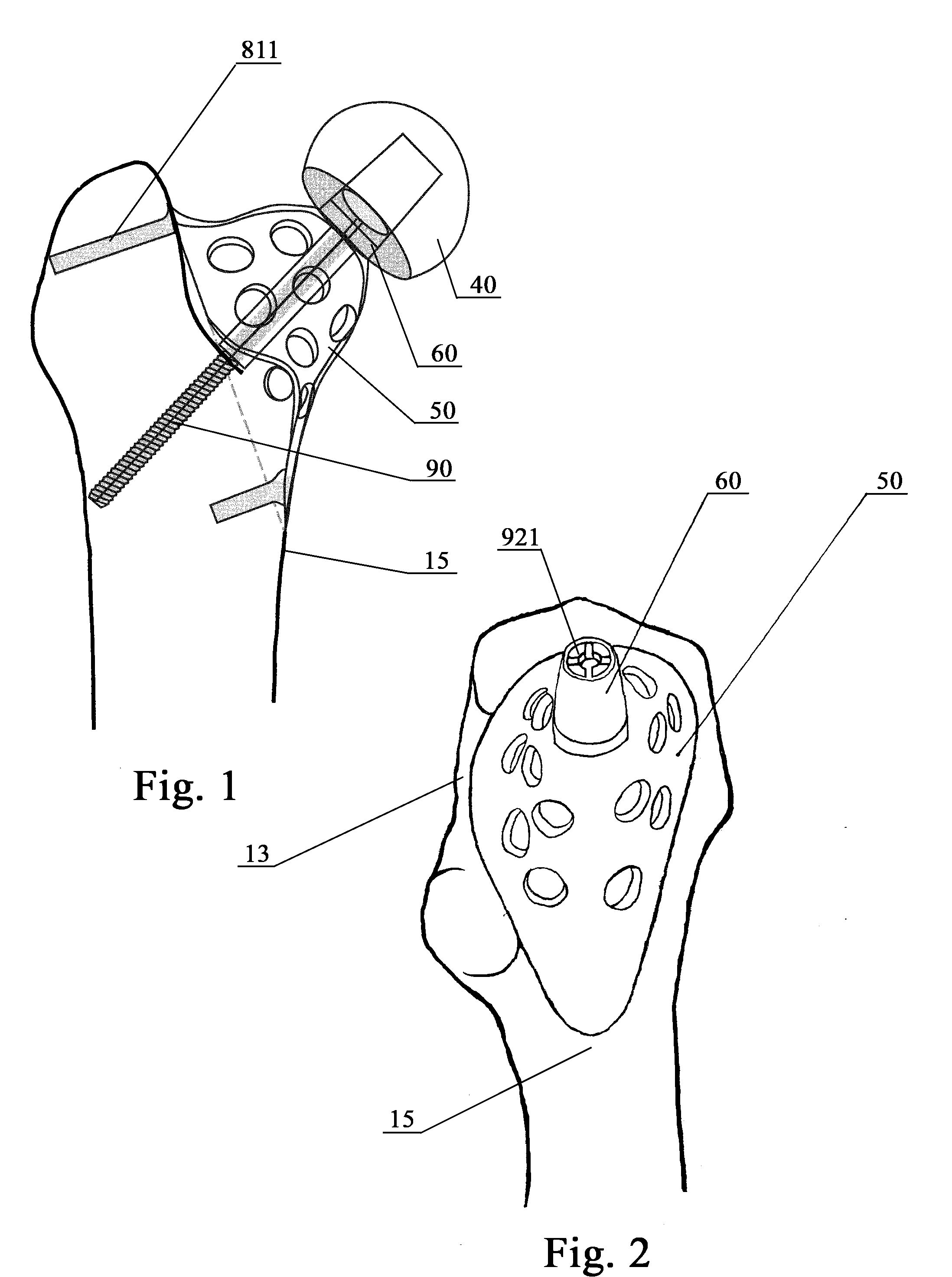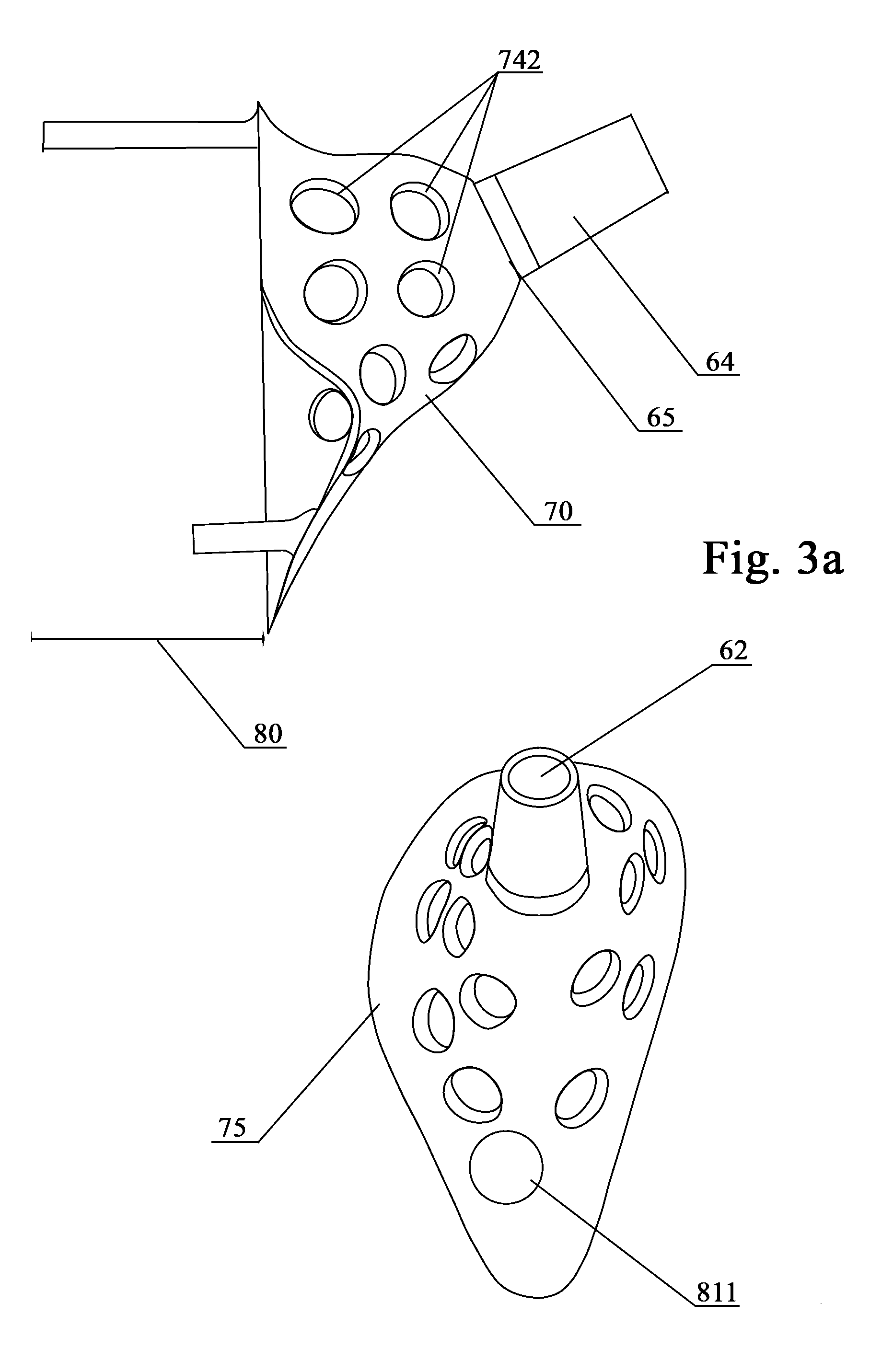An external proximal femoral prosthesis for total hip arthroplasty
a femoral prosthesis and total hip arthroplasty technology, applied in the field of femoral prosthesis, can solve the problems of bone disease or joint malfunction, undesirable atrophy of the affected area, so as to eliminate most of the complications, maintain bone quality, and eliminate the damage and changes on the anatomic structure
- Summary
- Abstract
- Description
- Claims
- Application Information
AI Technical Summary
Benefits of technology
Problems solved by technology
Method used
Image
Examples
Embodiment Construction
[0030]The present invention is directed to an external proximal femoral prosthesis for THA. Referring to FIGS. 1, and 2, in general, the shell (50) of prosthesis has a hollow bell shape with an asymmetric configuration for housing into outside retention of either the left or right proximal femur, respectively and anchor means for mechanically attaching and securing the shell to the proximal femur. More particularly, certain aspects of the present invention are directed to a femoral prosthesis that comprises several key features that provide an optimum configuration of the following factors:[0031](1) A minimum removal of bone during implantation, particularly retaining the femoral neck and keep the intramedullar canal of shaft in functioning, which could avoid any side-effect associated with opening intramedullar canal of the shaft.[0032](2) A broad contact area and stability of the implant on cortex bone surface as well as maximum ease of installation of the prosthesis.[0033](3)To m...
PUM
| Property | Measurement | Unit |
|---|---|---|
| Angle | aaaaa | aaaaa |
| Angle | aaaaa | aaaaa |
| Force | aaaaa | aaaaa |
Abstract
Description
Claims
Application Information
 Login to View More
Login to View More - R&D
- Intellectual Property
- Life Sciences
- Materials
- Tech Scout
- Unparalleled Data Quality
- Higher Quality Content
- 60% Fewer Hallucinations
Browse by: Latest US Patents, China's latest patents, Technical Efficacy Thesaurus, Application Domain, Technology Topic, Popular Technical Reports.
© 2025 PatSnap. All rights reserved.Legal|Privacy policy|Modern Slavery Act Transparency Statement|Sitemap|About US| Contact US: help@patsnap.com



